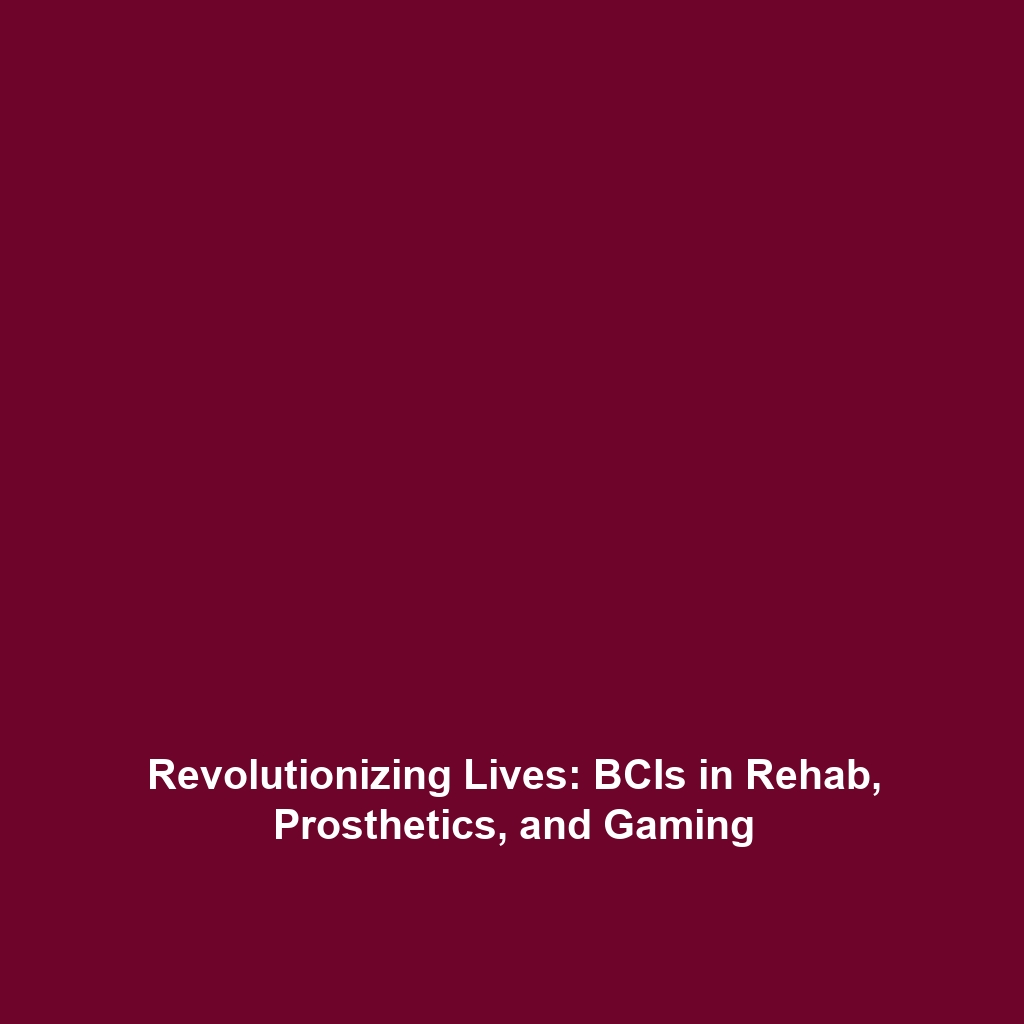Applications of Brain-Computer Interfaces
Introduction
Brain-Computer Interfaces (BCIs) are pioneering technologies that create a direct communication pathway between the brain and external devices. Their applications span multiple fields, notably medical rehabilitation, neuroprosthetics, communication devices designed for individuals with disabilities, and the gaming and entertainment industry. Understanding these applications is crucial as they demonstrate the transformative potential of BCIs, paving the way for innovative solutions that enhance quality of life and redefine human-computer interaction.
Key Concepts of BCIs
Understanding Brain-Computer Interfaces
BCIs operate by interpreting brain signals through various technologies, such as electroencephalography (EEG) and functional magnetic resonance imaging (fMRI). These signals are translated into commands that control external devices, making BCIs a vital tool for creating applications in several domains:
- Medical Rehabilitation: Tailored therapies that improve coordination and motor skills.
- Neuroprosthetics: Devices that restore lost sensory or motor functions.
- Communication Devices: Tools that assist individuals with severe physical impairments.
- Gaming and Entertainment: Enhanced user experiences and immersive gameplay.
Applications and Real-World Uses
How BCIs Are Used in Diverse Fields
The applications of BCIs in various domains illustrate their significance:
- Medical Rehabilitation: BCIs are utilized in therapy programs for stroke patients, helping them regain motor functions through targeted brain signal training.
- Neuroprosthetics: Advanced prosthetic limbs equipped with BCI capabilities allow users to control movements through thought, significantly enhancing their functionality.
- Communication Devices: BCIs enable individuals with conditions like amyotrophic lateral sclerosis (ALS) to communicate through eye movements or brain signals.
- Gaming and Entertainment: Neuroscience advancements in BCI technology foster immersive gaming experiences that adapt to players’ thoughts and intentions.
Current Challenges
Challenges of BCIs in Practical Implementation
While the potential for BCIs is immense, several challenges remain in their application:
- Signal Noise: Brain signals can be noisy and inconsistent, complicating the interpretation process.
- Accessibility: High costs and technology limitations prevent widespread use in medical and rehabilitation settings.
- Ethical Considerations: The use of BCIs raises significant ethical questions regarding privacy and data security.
- Standardization: There is a lack of universal standards for BCI development and application, hindering advancements.
Future Research and Innovations
Upcoming Breakthroughs in BCIs
Research is ongoing into enhancing the efficacy and accessibility of BCIs across all fields. Anticipated innovations include:
- Improved Algorithms: Development of sophisticated algorithms for better signal processing and interpretation.
- Wireless Technology: Advances in wireless signal transmission can lead to more user-friendly devices.
- Integration with AI: Artificial intelligence can offer personalized experiences, optimizing BCI applications based on individual user patterns.
- Regenerative Medicine: Research combining BCIs with neural regeneration may restore functionalities lost due to injuries or degenerative diseases.
Conclusion
BCIs represent a groundbreaking frontier in technology with significant applications in medical rehabilitation, neuroprosthetics, communication, and entertainment. As innovations continue to develop, the relevance and impact of BCIs will only grow, making it essential for stakeholders and researchers to collaborate in addressing challenges and expanding its applications. For further insights into the evolving landscape of Brain-Computer Interfaces, explore our detailed articles on Neuroprosthetics and Medical Rehabilitation.
